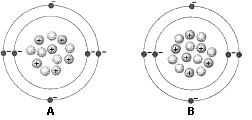What is a positive result for the starch, casein, and gelatin hydrolysis test (i.e., what would you see on the plate/in the tube if the organism had extracellular enzymes to break down these macromolecules?)
What will be an ideal response?
Ans: A positive test result for starch occurs when the substance in question causes a solution of iodine to turn a deep blue or purple-black color. The iodine retains its usual yellowish color when no starch is present.
If an organism can produce casein, then there will be a zone of clearing around the bacterial growth.
If the gelatin has been digested, the medium in the tube will fail to solidify after refrigeration. If gelatinase is present, the liquid medium will fail to solidify upon refrigeration
You might also like to view...
What key advantage do emerging technologies, such as MALDI-TOF and next generation sequencing, have over conventional hybridization and amplification techniques?
a. They do not require selection of suspected pathogens prior to testing. b. They do not require expensive instrumen-tation or skilled technicians. c. They eliminate sample preparation steps, such as nucleic acid purification, prior to testing. d. They are readily available in most clinical laboratories. e. All of the above.
The convergence in external morphology of
sharks, penguins, and porpoises is attributed to a. reduced genetic variability in these groups. b. selection pressures that are common to these groups. c. reproductive isolation of these groups. d. identical genes in all three groups. e. use and disuse of the limbs
Loams are soils with the best water and oxygen
penetration because they have a. a high proportion of sand. b. a high proportion of silt. c. a high proportion of clay. d. high proportions of sand and silt and a low proportion of clay. e. equal proportions of sand, silt, and clay
The difference between the two atoms in Figure 2-1 is:

a. pH.
b. the number of electrons.
c. the number of protons.
d. the number of neutrons.
e. electrical charge.